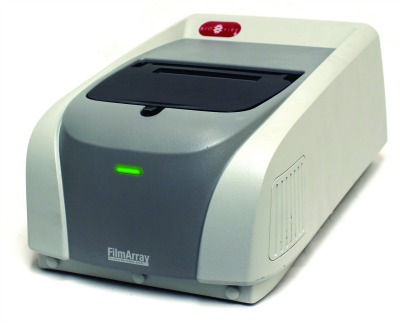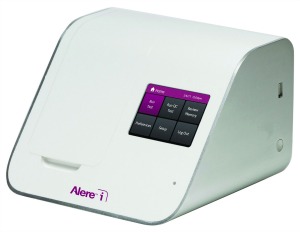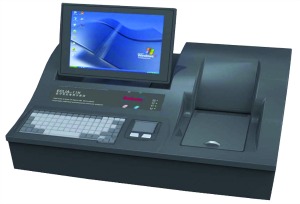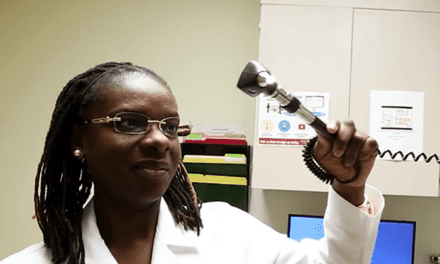Staying on the cutting edge means keeping up with continually advancing technologies
By Craig C. Foreback, PhD
Understanding the interaction of antigens and antibodies present in patient samples is a key tool for clinicians seeking to diagnose disease and initiate a treatment plan for their patients. It’s also the fundamental function of the field of serology, which traditionally seeks to examine the components of blood serum and other body fluids, including antigens and antibodies.
Over the years, serology has employed a wide variety of tests and technologies. The field is strongly bound to the emergence of immunoassays using a variety of detection methods, but not so bound that it hasn’t been affected by the emerging platforms of the molecular diagnostic revolution. In recent years, labs’ ability to detect and quantitate viruses in clinical samples—a traditional function of serology testing—has been significantly improved through the use of molecular techniques. (For more information, see the companion article, “Serology: A Tale of Shifting Technologies.”)
Antigen detection of infectious agents is often not as sensitive or specific as molecular methods, explains William M. Dunne, PhD, executive director of research and development for bioMérieux, Durham, NC, so the development of molecular methods has vastly improved our ability to detect infections at an early stage.
The advance of modern molecular diagnostics began in the mid 1980s with the development of technologies for automated DNA sequencing and fluorescence in situ hybridization.1 Breakthroughs in understanding continued during the 1990s as a result of the Human Genome Project and advances in applied technology. Over the past decade, molecular testing has continued its evolution, moving from labor-intensive manual methods to faster automated methods, and culminating in the current generation of high-throughput next-generation sequencers.2
This article looks at recent developments in instrumentation and methodologies for detection of viral agents, including a number of instruments that are based on the detection of antigens or antibodies rather than DNA or RNA.
VARIED PLATFORMS

The GeneXpert IV system by Cepheid is an integrated and automated molecular diagnostic platform that employs a cartridge for each test it performs.
Although there are many instruments that can perform testing for infectious diseases, laboratories must often combine the menus of two or more different platforms in order to attain the level of coverage they desire. Three such instruments using molecular techniques have been described in a recent article in these pages: the GeneXpert system by Cepheid, Sunnyvale, Calif; the eSensor XT-8 system by GenMark Diagnostics, Carlsbad, Calif; and the Panther system by Hologic Gen-Probe, San Diego.3
Competing with these molecular instruments is the BioPlex 2200 by Bio-Rad Laboratories Inc, Hercules, Calif, an immunoassay system billed as the industry’s first fully automated, random-access multiplex testing platform for infectious diseases (see Table 1). Advancing this instrument’s menu, Bio-Rad has recently announced its launch of the first fully automated fifth-generation human immunodeficiency virus (HIV) Ag-Ab test for markets outside the United States.
According to Paulina Leung-Lee, senior sales product manager in Bio-Rad’s US sales division, the company’s HIV Ag-Ab test identifies patients with early HIV infection by detecting both HIV antigen and antibodies present in patient samples. Early treatment of these patients and outreach to those they may have infected reduces the risk of further transmission. In addition, the fifth-generation test can differentiate between ongoing HIV-1 and HIV-2 infection—information that was not available using fourth-generation tests. With this additional information, clinicians can initiate appropriate treatment of infected individuals using a therapy optimized for their specific type of infection (HIV-1 versus HIV-2), thereby improving patients’ response to treatment. The HIV Ag-Ab test has been granted a CE mark, and FDA approval of the test is pending.
RESPIRATORY PANEL TESTING

The menu of the eSensor XT-8 system by GenMark Diagnostics includes an FDA-cleared molecular respiratory virus panel.
Respiratory viral infections can contribute significantly to morbidity and mortality, especially among young and elderly patients. However, most respiratory viruses present with similar symptoms, making them difficult to diagnose without laboratory testing.
Accurate and timely identification of respiratory viruses improves patient care, particularly when the pathogen is among those for which effective therapy exists, such as influenza viruses. Other benefits of identifying respiratory viruses include tracking the epidemiology of local outbreaks, applying appropriate infection control measures to admitted patients, and decreasing the use of unnecessary antimicrobial therapy.
Among the leaders in the field of molecular respiratory virus panel testing is BioFire Diagnostics, Salt Lake City, which was acquired by bioMérieux in January of this year. BioFire specializes in molecular biology and has developed and produced the FilmArray system—a platform that integrates sample preparation, amplification, detection, and analysis into a single complete process that delivers results in about an hour.

The FilmArray system by BioFire Diagnostics integrates sample preparation, amplification, detection, and analysis into a single process, and delivers results in about an hour.
According to bioMérieux’s Dunne, the FilmArray system makes it possible for the molecular biology tests on its menu to be performed in hospital laboratories, supporting faster and more efficient medical decision-making. The FilmArray system currently offers two FDA-cleared panels, a respiratory panel (RP) and a blood culture identification panel.
In addition to the FilmArray RP, several other molecular respiratory virus panels have also received FDA clearance for marketing in the United States, including the eSensor RVP by GenMark Dx, Carlsbad, Calif; and the xTag RVPv1 and xTAG RVP Fast by Luminex, Austin, Tex. A recent study compared these four multiplex assays for the detection of respiratory viruses and concluded that BioFire’s FilmArray RP was the easiest to use and had the shortest time to result.4
The FilmArray panel also logged sensitivities greater than 92% for influenza virus A-H3; metapneumovirus; parainfluenza virus 1, 2, and 3; and respiratory syncytial virus (RSV) B. The panel was 100% specific for all viral targets. BioFire has now made available an extended FDA-cleared panel of 20 targets that includes Bordetella pertussis, Chlamydophila pneumoniae, and Mycoplasma pneumoniae, making the FilmArray RP the panel with the most targets and the only one to include bacterial targets (see Table 2).
POINT-OF-CARE FLU TESTING
So-called “rapid” flu tests are typically immunoassays in a cartridge-based format capable of providing results in as little as 15 minutes. Because of their short time to result, such tests are widely used in many settings where timely diagnosis is important for case identification and immediate initiation of treatment.
Assuring the accuracy of such devices is imperative so that patients get the correct treatment, and so that public health officials are provided the correct epidemiological information needed to control an outbreak. However, the 2009 H1N1 flu pandemic demonstrated the unreliability of many rapid flu tests.
In the face of emerging new flu strains, the inaccuracy of such tests could lead to misdiagnosis and delayed treatment, in turn contributing to a broader public health crisis. After receiving many reports about the poor performance of rapid tests for influenza, FDA has recently proposed to tighten the standards applicable to such tests.5
Is a rapid molecular point-of-care assay a potential solution to the problem of inaccurate flu testing?
Last June, FDA granted premarket notification (510(k)) clearance for the Alere i Influenza A and B test—the first molecular diagnostic capable of detecting and differentiating influenza A and B infection in less than 15 minutes. The new test gains speed by avoiding the use of target amplification by polymerase chain reaction (PCR), with its characteristic need for lengthy and complex thermocycling and DNA purification. Instead, the test makes use of Alere’s proprietary molecular in minutes isothermal nucleic acid amplification technology, which promises to deliver PCR-quality results more quickly and in a broader range of settings.
“Alere’s new influenza test is performed on the Alere i, an analyzer with a small footprint suited for placement in such point-of-care settings as clinics, urgent care settings, small hospitals, and student health centers,” explains Keith Stauffer, Alere’s head of North American regional marketing. The test is currently rated as moderately complex under the categorization standards of the Clinical Laboratory Improvement Amendments of 1988 (CLIA), but clinical trials for a CLIA waiver have been completed and the company expects to file for waived status before the end of the year. Other tests to be added to the Alere i menu over the next two years include chlamydia, Clostridium difficile, gonorrhea, RSV, and Streptococcus A.

The menu of the Alere i system includes the first molecular diagnostic capable of detecting and differentiating influenza A and B infection in less than 15 minutes.
Peer-reviewed evaluations of the Alere i Influenza A and B test have been reported in recent literature. One study comparing the test to viral cell culture, with discrepant results resolved by real-time RT-PCR, found the sensitivity and specificity of the Alere test to be 99.3% and 98.1% for influenza A, and 97.6% and 100% for influenza B, respectively.6 The authors concluded that the Alere assay is an ideal point-of-care test for influenza detection in children and adults because of its high sensitivity and specificity, and its ability to generate results within 15 minutes from specimen receipt.
Another evaluation comparing the Alere test to its counterpart FilmArray test by BioFire observed that it offered good sensitivities and specificities of 100%.7 The researchers commented that “the integrated, rapid and simple characteristics of the Alere i influenza A & B assay make it a potential candidate for point of care testing providing a turnaround time of less than 15 minutes.”
VIRAL LOAD TESTING
When caring for patients infected with HIV or hepatitis C virus (HCV), viral load tests play an important role in monitoring the effectiveness of therapy and evaluating the progress of the disease. Viral load tests can also alert clinicians that a patient may have discontinued taking a prescribed medication.
Real-time viral load testing is a key feature of the m2000 system by Abbott Molecular, Des Plaines, Ill, a platform that automates the complex and manual steps often associated with molecular testing.
“In 1985—before AIDS became a worldwide epidemic—Abbott developed the world’s first test to detect HIV-1 antibodies in human blood, thus helping to protect the world’s blood supply,” says Gavin Cloherty, PhD, associate director for global scientific affairs at Abbott. “Since then, with the development of instruments such as the m2000 system, Abbott has made significant contributions to help combat AIDS, with ongoing advances in HIV testing by providing molecular diagnostic tests to detect and monitor HIV infection.”
Abbott’s m2000 system offers real-time molecular assays for hepatitis B (HBV), HCV, and HIV, emphasizing the viral load capabilities critically important in patient care. “Once a patient is diagnosed with hepatitis C, Abbott’s RealTime HCV Genotype II test—currently the only FDA-approved hepatitis C genotyping test—helps physicians determine what strain or type of hepatitis C is present,” says Cloherty. “Throughout treatment, Abbott’s RealTime HCV viral load test is an important and precise tool for monitoring the amount of virus in a patient’s blood. This aids physicians in monitoring a patient’s response to antiviral therapy, and determining whether the treatment is working.”
ORAL CANCERS
The American Cancer Society estimates that in 2014, about 37,000 people in the United States will be diagnosed with oral cavity or oropharyngeal cancer, and an estimated 7,300 people will die of these cancers. In recent years, the overall rate of new cases of this disease has been stable in men and dropping slightly in women.
However, there has been a recent rise in cases of oropharyngeal cancer linked to infection with human papilloma virus (HPV) in white men and women. An incidence of 4% of HPV-driven cases has been observed across subsites outside the oropharynx, compared to 70% of tumors confined within it.8
DiaCarta Inc, Hayward, Calif, has developed an HPV oral test that directly measures the virus in saliva samples, without DNA or RNA purification or RT-PCR, and may offer a superior way to screen for oral cancers.

DiaCarta’s QuantiReader benchtop luminometer directly measures the HPV virus in saliva samples, without DNA or RNA purification or RT-PCR.
DiaCarta’s QuantiVirus HPV E6/E7 mRNA probe kit is an analyte-specific reagent that detects HPV oncogenes E6 and E7 mRNA from 14 high-risk HPV types and six low-risk HPV types, and performs genotyping for HPV 16 and HPV 18. There are no cleanroom requirements, and the test offers a 5-hour turnaround time. The company reports sensitivity and specificity greater than 90%.
According to Sholeh Jahanfard, director of sales for DiaCarta, “the test employs a signal-amplification chemiluminescence detection format and can be read on most luminometers.” Nevertheless, the DiaCarta catalogue also makes available the company’s own instrument, the QuantiReader benchtop luminometer. The DiaCarta test is currently being evaluated in several sites inside and outside the United States.
For more information, see the companion article, “Serology: A Tale of Shifting Technologies.”
Craig C. Foreback, PhD, is a contributing writer and member of the CLP editorial advisory board. For further information, contact chief editor Steve Halasey via [email protected].
REFERENCES
1. Tsongalis GJ, Silverman LM. Molecular diagnostics: a historical perspective. Clin Chim Acta. 2006;369(2):188–192. Epub March 28, 2006.
2. Foreback CC. Oncology diagnostics. Clinical Lab Products. 2014;44(9):18–21.
3. Foreback CC. The new path forward. Clinical Lab Products. 2014;44(8):16–19.
4. Popowitch EB, O’Neill SS, Miller MB. Comparison of four multiplex assays for the detection of respiratory viruses: BioFire FilmArray RP, GenMark eSensor RVP, Luminex xTag RVPv1, and Luminex xTag RVP fast. J Clin Microbiol. 2013;51(5):1528–1533; doi: 10.1128/JCM.03368-12. Epub March 13, 2013.
5. Regulatory Roundup. Clinical Laboratory News. 2014;40(8):20–21.
6. Bell J, Bonner A, Cohen DM, et al. Multicenter clinical evaluation of the novel Alere i influenza a&b isothermal nucleic acid amplification test. J Clin Virol. 2014;61(1):81–86; doi: 10.1016/j.jcv.2014.06.001. Epub June 7, 2014.
7. Nie S, Roth B, Stiles J, et al. Evaluation of Alere i influenza a&b for rapid detection of influenzaviruses a and b. J Clin Microbiol. 2014;52(9):3339–3344; doi: 10.1128/JCM.01132-14. Epub July 2, 2104.
8. Upile NS, Shaw RJ, Jones TM, et al. Squamous cell carcinoma of the head and neck outside the oropharynx is rarely human papillomavirus related. Laryngoscope. 2014; doi: 10.1002/lary.24828. Epub ahead of print, July 18, 2014.










